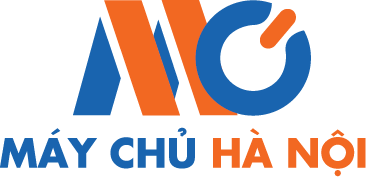Tư vấn bán hàng
These technologies enable computers to carry out operations based on what the data indicates is the best course of action. AI is used in advanced systems to diagnose disease, buy and sell stocks, and play chess better than a human. Wisdom is the synthesis of information, knowledge and experience in a way that applies knowledge https://traderoom.info/difference-between-information-and-data/ to real-life situations. The concept of wisdom enables the understanding of patterns and their driving factors.
- Oversimplification occurs when information is reduced to a level that excludes important details or nuances, making it easier to understand but less accurate.
- For example, the average score of a subject or the report cards of students.
- When put together, similar sets of data can provide valuable information and help determine the statistics of a particular subject/topic.
- It is essentially a collection of bits and bytes that require interpretation and analysis to become useful.
- It is the foundation of any analysis, decision-making process, or business operation.
Important Difference Between Data And Information Explained!
In conclusion, data and information are distinct entities with unique attributes and roles. Data represents raw, unprocessed facts or symbols, while information is the transformed version of data that provides meaning and context. Data is objective, raw, and neutral, while information is subjective, processed, and valuable.
Top 5 Differences
Qualitative data captures the subjective qualities of what’s being observed, such as survey responses or interviews. The quantitative type, on the other hand, is numerical and can be measured and quantified, offering more precision and objectivity. Furthermore, data and information are part of a larger knowledge cycle. Information contributes to knowledge by providing insights and understanding, which can then be applied to generate new data or refine existing data. This iterative process of data collection, analysis, information creation, and knowledge generation drives innovation, discovery, and progress in various fields.
In conclusion, data and information are two distinct concepts that are often confused with each other. Data is the raw material that is used to extract insights and make decisions, while information is the outcome of processing and analyzing that data. Understanding the difference between data and information is crucial for effective decision-making, improved communication, and better problem-solving.
Data vs. Information: A Comparative Analysis
We help companies enable their employees to work more efficiently, align teams, and achieve better results. Additionally, a study from Dimensional Research found that 82% of companies are making decisions based on outdated information. This article has clearly and concisely summarized the differences and similarities between data and information for beginners to understand. Hopefully, you are now in a position to look around and distinguish between data and information correctly. Looking at data vs information charts side-by-side helps us strengthen more correct theories and put more high-quality solutions into specific problem areas. Similar sets of data contribute to making up invaluable information that is concise and easily understood by everyone.
When there is too much data, it becomes harder to make informed decisions quickly. Information is a collection of data that has been meaningfully processed in accordance with the stated criteria. To make information relevant and valuable, it is processed, arranged, or presented in a certain context.
Data provides the necessary facts, but information brings understanding to those facts. Data is transformed into information through various processes, such as data analysis, interpretation, and synthesis. These processes extract patterns, trends, and relationships from the data, enabling the creation of meaningful information. Conversely, information can be deconstructed into data by breaking it down into its constituent elements or units. While information is crucial for decision-making, it also has its drawbacks.
This can help in areas such as market analysis, customer service improvements, and innovation in products or services. Regular audits are also crucial—they help keep the data clean and trustworthy, ensuring that businesses can rely on their insights for making informed decisions with confidence. Think of data as the building blocks—simple, plain, and not very informative on their own, like eggs and flour on a countertop.
“Information” is an older word that dates back to the 1300s and has Old French and Middle English origins. It has always referred to “the act of informing,” usually in regard to education, instruction, or other knowledge communication. Let us take an example “5000” is data but if we add feet in it i.e. “5000 feet” it becomes information. If we keep on adding elements, it will reach the higher level of intelligence hierarchy as shown in the diagram. The focus of this libguide is finding and accessing statistical data.
Difference Between Data and Information
No strategic decision in business can take place without relevant data. It must be given a structure to be able to use it for various business operations. Thus, data available to the business organization must be properly analyzed step by step, and the complete process of transformation of data into information must be followed. In conclusion, both data and information are crucial, but their importance depends on the context in which they are used. Data, in its raw form, provides the foundation for analysis, offering endless possibilities for interpretation and insight. However, without proper organization and context, it lacks meaning and can be overwhelming.
Data comes in forms like numbers, figures, and statistics, while information usually comes as words, thoughts, and ideas. While data, on its own, might be meaningless, information is always meaningful. Unlike data, Information is a meaningful value, fact and figure which could derive something useful. Data can adopt multiple forms like numbers, letters, set of characters, image, graphic, etc.
- Data represents raw, unprocessed facts and figures collected from various sources.
- Data and facts can be analysed or used as an effort to gain knowledge and infer on a conclusion.
- Moreover, prioritizing data and information quality is crucial to ensuring the reliability and accuracy of insights derived from data.
- Furthermore, data and information are part of a larger knowledge cycle.
- Data suggests that raw facts and figures regarding individuals, places, or the other issue, that is expressed within the type of numbers, letters or symbols.
Information is usually a simplified form of data that can be gauged by common people and aids in their decision-making processes. To sum it up, organizations can make better and faster business decisions by processing available data into valuable information. Owing to the importance of data and information, businesses across the world need to have sound strategies to productively make use of the data available to them.
Unlike information, which does not lack meaning in fact they can be understood by the users in normal diligence. While data is an unsystematic fact or detail about something, information is a systematic and filtered form of data, which is useful. In this articl, you can find all the important differences between data and information.




